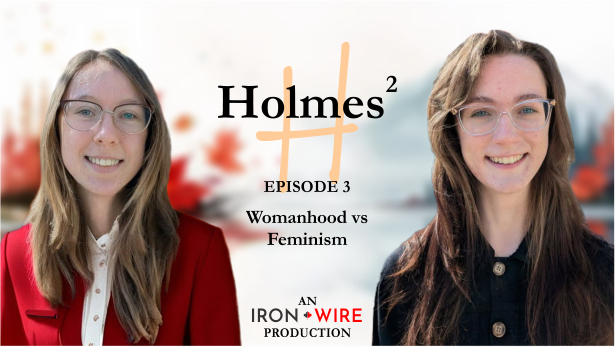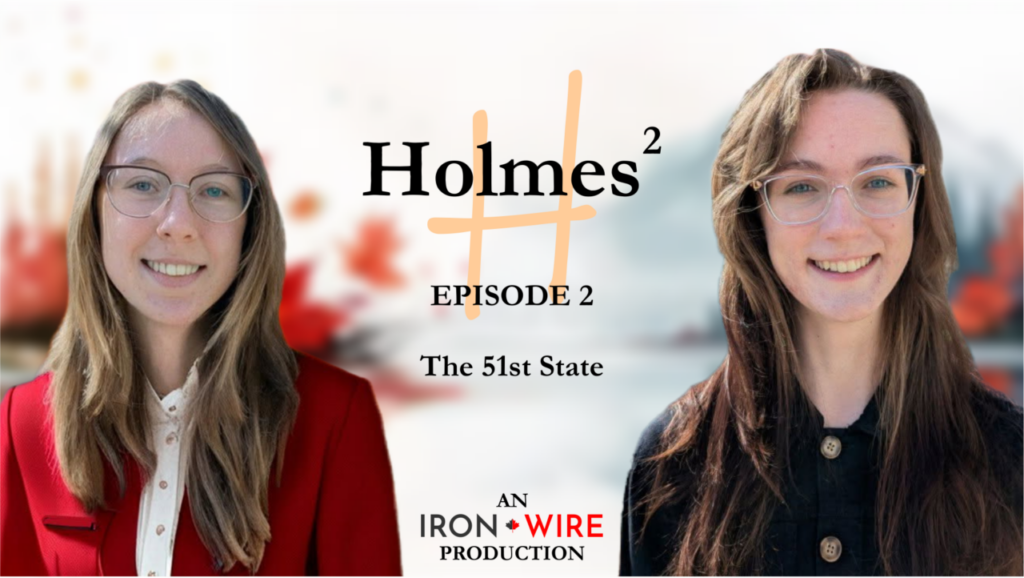Francis’ ‘favorite’ Cardinal Aveline and his subversion of Christ’s role as mediator – LifeSite
(LifeSiteNews) — Cardinal Jean-Marc Aveline is rumored to be the favorite to succeed Francis in the next conclave. In Part I, we looked at Aveline’s interreligious theology and the clear departure of his ideas from Catholic tradition. In this part, we will examine his subversion of the traditional understanding of Christ’s status as the mediator between God and Man, and how he presents non-Catholic religions as participating in this mediation.
I. AVELINE’S DOCTRINE OF ‘CHRISTIC MEDIATION’ AND ITS CREATION
Aveline’s theological trajectory: From religious pluralism to a new theology of salvation
Cardinal Jean-Marc Aveline’s “theology” is a comprehensive system designed to replace the Catholic faith from within. At its center is a technique of subversion: the deconstruction of commonly accepted ideas by treating them as problematic, subject to critique, and in need of refinement.
Applied to the Church’s teaching, this is a significant inversion. It is the Church’s teaching that gives us the light to evaluate our understanding of reality, not the other way around. Aveline’s approach hollows out the Catholic religion, and replaces it with a new theology—one which maintains a veneer of Catholicism through its use of traditional terms and ideas, but which are ultimately evacuated of their real meaning.
Understanding Aveline’s theology has never been more important. He was just elected president of the French Bishops’ Conference, and Vatican insiders have told LifeSiteNews that Aveline “will be the next pope.” Edward Pentin and Diana Montagna’s Cardinalium Collegii Recensio likewise states that he is “allegedly Pope Francis’ ‘favorite’ cardinal to succeed him.”[1]
In order to understand Aveline’s subversive approach to Christ’s status as mediator, we must first understand the true doctrine.
The true doctrine of Christ‘s unique mediation—prior to its subversion
Holy Scripture speaks of Jesus Christ as the “one mediator” between God and Man.[2]
The purpose of a mediator is “to join together and unite those between whom he mediates,” as St. Thomas Aquinas says.[3] Given the estrangement of Man from God in sin, Christ’s mediation had a reconciliatory quality, and it was through his redemptive death on the Cross that he mediated this reconciliation.
Only the concrete, individual man, Jesus of Nazareth, is capable of mediating the reconciliation between God and Man, because only he is both divine and human.[4] These two natures in one person allowed Christ to offer an act of sacrifice of perfect and infinite value, while at the same time still being a member of the human race (and indeed as its new head).
While it is possible for others to be called mediators in some lesser respect, such mediation is different in kind,[5] and only effective insofar as it participates in and is united to Christ’s mediation.
One may benefit from Christ’s mediation and his atoning sacrifice by being united to him in the Church (his mystical body) and by the theological virtues of faith, hope and charity.[6]
This understanding of Christ’s unique mediation poses no problems for those who hold to traditional Catholic doctrine. However, it does create a problem for those who wish to affirm that men can be saved, despite not knowing Christ or his Church (or even rejecting them), and without possessing the theological virtues as traditionally understood.[7]
It is this a priori commitment to the salvation of non-Catholics that “requires” the creation of Aveline’s fabricated concept of “Christic mediation.”
Let us see how Aveline’s theological method destabilizes dogmatic certainties and opens a way for this concept.
Aveline’s method: problematize, reinterpret, replace
Aveline’s theological system rests on a destructive method: problematization. This technique treats settled truths and even dogma as uncertain human ideas, which are subject to allegedly powerful objections. It assumes that these objections mean that that the traditional formulations need to be reinterpreted, and it presumes to save the Catholic religion and bolster it against contemporary questions by retaining traditional formulations, whilst elevating and refining their meaning.
In effect, Aveline’s results are a theology of words and terminology that might sound orthodox, but which convey a novel and heterodox meaning. Aside from being a tactic forbidden by Vatican I and Pope St. Pius X (as well as all of Catholic tradition), this manipulation of “verbal orthodoxy” is a hallmark of the modernists, as noted by Pietro Parente:
A heresy, or rather a group of heresies […] with the pretense of elevating and saving the Christian religion and the Catholic Church by means of a radical renovation. […]
[A] hybrid amalgamation of verbal Catholicism with real naturalistic rationalism…[8] (Emphasis added)
Instead of beginning from revealed truth, this method begins from contemporary questions—questions posed by religious diversity, historical change, and human experience. It then treats traditional doctrine not as a source of answers, but as problems in need of solutions and reinterpretation.
This technique comes not from the Fathers, nor the Scholastics, nor the Magisterium. It descends from Protestant relativism, Enlightenment historicism, and postmodern literary theory. Its goal is not clarification, but destabilization.
How it is applied to the necessity of the Church and supernatural faith
In Part I, we discussed how Aveline applies this subversive approach to the Catholic dogma extra ecclesiam nulla salus (outside the Church, no salvation) and the nature of supernatural faith. He claims that the Church herself “recognizes the possibility of a positive role for other religions, as socio-cultural realities, in the general economy of salvation”—and that non-Catholic religions can have a “salvific or revelatory value.”[9] He dismisses views that reject this as being:
- “Exclusivist”
- Based on “a narrow ecclesiocentricism”
- Relying on what he alleges is “a hardened, and thus distorted, interpretation of the ancient Patristic adage: ‘Outside the Church, no salvation.’”[10]
In the previous part, we demonstrated that this “ancient Patristic adage” is in fact a dogma of the Church, and that what he calls a “hardened and thus distorted interpretation” is precisely what both the Magisterium and the Fathers taught.
However, after other religions have been recast as positive instruments in the divine plan, Our Lord’s role as the one Mediator between God and Man is the next problem to be reinterpreted. This is precisely what Aveline attempts.
In place of the Catholic doctrine—that Christ alone reconciles man to God through the Cross—he offers the notion of a universal christic[11]mediation. While this novel term may sound orthodox to some, this term masks a radical inversion. He expresses his understanding of the matter as follows:
[T]he uniqueness and universality of the christic mediation in the general economy of salvation. Jesus Christ is “the only mediator of salvation” (1 Tim 2:5) and “there is no salvation outside of him, for there is no other name under heaven given among men by which we must be saved” (Acts 4:11-12).[12]
This might appear to be a strong statement, notwithstanding the novel term. However, he continues, revealing his departure from the sense of the dogma:
Consequently, it is only through their relation to Christ that the religions hold, in the eyes of Christians, their positive value in the order of salvation…[13]
In other words, rather than being devoid of salvific value, they are endowed with salvific value through Christ. He adds:
In this way, a relativist position is excluded, which would hold that all religions can lead to salvation in a way completely independent of the concrete history of salvation accomplished in Jesus Christ.[14]
Exposing Aveline’s false dichotomy exposes the subversion
Here we see Aveline creating a false dichotomy between “pure” relativism and his mitigated version. He reframes the question “Can all religions lead to salvation?” as “Can all religions lead to salvation independently of Christ?”
This maneuver allows him to present a dichotomy between two forms of relativism, despite both being false. This in turn allows him to redefine the Church’s exclusive claim without directly denying it—recasting it as a theological puzzle to be explained, rather than a revealed truth to be accepted with faith.
We see the false dichotomy compounded further in Aveline’s work. He boldly states that “the universality of salvation through the unique christic mediation is established,”[15] and on this false assumption, he proceeds to consider whether other religions participate in this “christic mediation” in a provisional or permanent way:
- Do other religions have a role to “play in the economy of salvation,” but with “only a provisional status, due to a temporary tolerance of divine mercy”
- Do they have a “specific role in the divine plan of salvation” and thus should be recognized as legitimate mediations of grace.[16]
These are the only two permitted options in Aveline’s false dichotomy, because the traditional doctrine has already been excluded.
Aveline himself clearly prefers the second option, which necessitates redefining Christ’s mediation in a way that includes other religions, rather than requiring men to come out of them.[17] In this model, conversion to Christ and his Church is rendered optional at best, because every religion already partakes of Christ’s salvific work.
False solution to a non-existent problem
In fact, neither option is correct, and there is no “problem” or “mystery” of religious pluralism to resolve in the first place.
The truth is, as discussed previously, that all other religions are false religions—a fact that does not fit into Aveline’s theological synthesis.
These false religions are tolerated by God’s permissive will. They may serve as “stepping stones” towards the truth in some cases, although this occurs “accidentally”—that is, not by the nature of the false religion itself, but by incidental truths or elements within it that may lead a soul toward the Catholic faith. However, in many cases, these “good elements” actually serve to keep their adherents trapped and away from the true religion.[18]
The only mysteries here are those of original sin and of God’s permission of evil. As such, there is no need to explain how false religions might have a “salvific or revelatory value”—because they do not have such value. This means, in turn, that there is no need to reimagine the dogma extra ecclesiam nulla salus, or Christ’s mediation, or to reorientate the mission of the Church around the concept of dialogue.
In short, the whole of Aveline’s project is exposed as unnecessary and subversive of the Catholic religion.
Let us see how both Aveline’s artificial problem and solution arise from his excessively respectful treatment of non-Catholic sources.
Aveline’s theological sources: Protestant and modernist influences
Aveline’s research thesis was on the debate between the Protestant writers Tillich and Troeltsch—both of whom have been influential in shaping Aveline’s thinking. In different ways, both of these figures erode the traditional understanding of revelation, mediation, and the necessity of the Church for salvation.
In the previous part, we noted that Aveline’s handling of Tillich and Troeltsch is itself ambiguous, in that he sometimes reports their theories neutrally, whilst at other times expresses a deeper level of endorsement.
For instance, he describes a lecture by Troeltsch as “masterful [magistrale]”—and yet this lecture rejected the “supernaturalist” view of Christianity (which, as discussed previously, is essentially the true view). This lecture was also critical of treating Christianity as an “absolute” religion, and argued that all world religions are “expressions of religious consciousness corresponding to certain determined types of culture.”[19]
Meanwhile, Aveline explains how Tillich (the other focus of his research work) constructed a theology in which religions “play a role in the divine plan of salvation”; this role is “christic,” but “is not reducible to [Christ’s] historical manifestation in Jesus of Nazareth.”[20]
This allows for a universal mediation of grace through all religions, making explicit faith in Christ unnecessary, and even negating the necessity of the supernatural virtue of faith itself.
How Aveline builds on these Protestant thinkers to present his ‘christic mediation’
Aveline’s own conception of “christic mediation” is an adaptation of Tillich and Troeltsch’s ideas, with the additional influence of Henri de Lubac.
De Lubac emphasized that the Church has a “dual relationship”: on one hand, to the unique mediation of Christ; on the other, to the plurality of the world’s religions.[21] He explains the matter further, approvingly citing de Lubac’s ideas about what the Church offers the world:
Starting from the postulate that ‘the human race is one,’ that it forms a body, that this body is called to salvation, and that this salvation consists in receiving the form of Christ, de Lubac deduced that the Church, ‘as a visible and historical institution, is the providential means of this salvation,’ and that, ‘as the invisible Body of Christ,’ it identifies with the final salvation.[22]
On the contrary, the starting point for such a discussion should be divine revelation itself, not the unity of the human race, or any observations about a plurality of religions. However, such ideas allow de Lubac (and Aveline) to claim that non-Catholics already have “vital exchanges” (échanges vitaux) with the Church through their religious traditions, even if they do not formally belong to her.[23]
These ideas move far beyond the traditional Catholic understanding. The Church acknowledges that individuals outside her visible structure may receive extraordinary graces; Aveline transforms this possibility into a principle. He excludes the idea that these graces may be ordered towards bringing men to Christ in his Church, and instead makes false religions positive means of salvation.
However, in Aveline’s system, “christic mediation” turns false religions into unofficial extensions of the Church’s saving work. This explains how Aveline can propose the functional rejection of extra ecclesiam nulla salus we considered in the first part, and replace the missionary mandate with dialogue and religious accompaniment (as we shall see in the next part).
II. THE IMPLICATIONS OF AVELINE’S CHRISTIC MEDIATION FOR CATHOLIC THEOLOGY
Aveline’s concept of “christic mediation” is not merely a benign novelty—it is a theological maneuver, which unacceptably reinterprets the doctrine of Christ’s unique role.
Aveline’s approach is like a man pulling on a piece of thread, and causing the whole tapestry of the Catholic Church to unravel. By artificially excluding or ignoring aspects of traditional doctrine, he artificially creates theological lacunae, which result in either the unravelling of doctrine or the need for further “solutions.”
Let us examine the effect of his reimagined “christic mediation.”
‘Christic mediation’ negates the supernatural nature of salvation
By emphasizing the universal nature of “christic mediation” across all boundaries, Aveline (following de Lubac) emphasizes the unity of humanity as a whole, and presents its natural, biological unity as having itself a supernatural and revelatory meaning.[24]
This previous focus on the “one body of humanity” as a participant in “christic mediation” and “vital exchanges” with the Church contradicts the Church’s teaching on the necessity of faith and formal membership in the Church for salvation.
Modern theology has been criticized for suggesting that salvation does not consist in a supernatural redemption from sin and a restoration of the divine likeness; but rather, in a reality which has already occurred, consisting in “the mystery of man” being unveiled through Christ’s incarnation, in which he “united himself, in a certain way, with each man.”
Aveline expresses a repackaged and further developed version of this reading in his 2023 book, Dieu a tant aimé le monde, and does so in a way that subtly problematizes the necessity of individual conversion, recasting it as redundant within a broader universal process.
[T]he Franciscan Éloi Leclerc places these luminous words in the mouth of Francis of Assisi during his conversation with Brother Tancred:
‘To evangelize a man, you see, is to say to him: you too are loved by God in the Lord Jesus. And not only to say it but to truly think it. And not only to think it but to act towards this man in such a way that he feels and discovers that there is something in him that is saved.’[25]
These words could perhaps be interpreted in an orthodox way. However, in the wider context of Aveline’s ideas, they cannot help but take on an unorthodox sense that negates the necessity of supernatural faith.
‘Christic mediation’ negates the necessity of supernatural faith
However, supernatural faith is absolutely necessary for salvation, and Pope Gregory XVI stated that this was a dogma:
You know how zealously Our predecessors taught that very article of faith which these dare to deny, namely the necessity of the Catholic faith and of unity for salvation.[26]
Outside of cases of direct private revelation, the Church’s proposition is a condition sine qua non for the virtue of faith, as discussed in the previous part. Those who do not submit to the Magisterium of the Church cannot have supernatural faith,[27] unless they receive a direct supernatural revelation from God—an extraordinary case, which is not to be presumed. Without the Church (whose credentials are established on independent grounds[28]) or immediate revelation, there is no certainty that what is believed has been divinely revealed—only opinion, however sincere.[29]
In discussing the eternal destiny of those who have never heard the Gospel, the theologians Rivas and de Aldama state the following principle:
A solution of this problem should not be attempted which ignores the basic elements of this problem. Hence it is necessary to say: if an adult is saved, he is not saved without an act of faith; if an adult is not saved, he is not damned without his own fault.
Therefore these two points must be maintained in any attempt at a solution.[30]
Aveline’s theory simply ignores “the basic elements of this problem”: in fact, he ignores necessity of both faith itself, and the Church’s role as a condition sine qua non. This is the characteristic pattern of Aveline’s theology. He does not openly deny the Church’s teaching on supernatural faith—but by ignoring it, and problematizing other related dogmas, the necessity of faith is abandoned.
In fact, he does not need to deny anything at all—because the negation is achieved implicitly, whether through silence or by presuming that such faith is possible (or even unnecessary) for non-Catholics.
As such, his system renders supernatural faith unnecessary in practice, and is a denial of the truth that “without faith it is impossible to please God” (Heb. 11:6).
‘Christic mediation’ negates the necessity of the Church for salvation
Once salvation is de-supernaturalized and the need for supernatural faith is negated, insisting on membership of the Church becomes incomprehensible. It becomes impossible to see how membership of the Church differs from that of any other society (such as a nation, or a political party), and any attempt to link it to salvation comes to seem like chauvinism or bigotry.
This leads to the creation of a false ecclesiology in which the Church is merely one way of reaching salvation; perhaps the “privileged route” or an umbrella under which others participate, but not the exclusive route. Thus, the Church is no longer a visible society of salvation, but one religious community among many—albeit the one which provides grace and salvific value for all (or most) of the others. Aveline uses these conclusions to affirm the “spiritual, moral, and socio-cultural riches” in other religions, and to tell Catholics to seek “traces of the Spirit’s work” within them.[31]
The supposed presence of “christic mediation” in other religions cannot help but destroy any urgency in seeking converts, which becomes condemned as “proselytism.” As we shall see in subsequent parts, Aveline’s studied hostility towards planning and strategy in evangelization is a theme to which he returns throughout his work:
[M]ission does not consist in devising missionary strategies for the conversion of Muslims— that would seem to me pretentious and profoundly arrogant. Rather, one must be present, in friendship and openness, attentive to the work of the Holy Spirit in the other and in oneself, always ready to bear witness to our Lord Jesus Christ.[32]
The implications of ‘christic mediation’ are condemned by the Church
All this unravelling leads to positions that have been explicitly condemned by the Church. For example, the Syllabus of Errors rejects the following proposition:
Condemned Error n. 16: Man may, in the observance of any religion whatever, find the way of eternal salvation, and arrive at eternal salvation.[33]
Further, the Council of Florence’s solemn teaching takes a very different view to Aveline:
[“The Holy Roman Church”] firmly believes, professes and preaches that all those who are outside the Catholic Church, not only pagans but also Jews or heretics and schismatics, cannot share in eternal life and will go into the everlasting fire which was prepared for the devil and his angels, unless they are joined to the Catholic Church before the end of their lives.[34]
We have examined these and similar texts in the previous part.
Aveline’s framework, which insists that non-Catholic religions hold “a positive value in the order of salvation” and participate in “christic mediation” directly contradicts defined teachings and falls subject to these condemnations.
His position, therefore—both in itself and in its implications—are not simply misguided. It leads to the dissolution of Catholic doctrine, and this is why these ideas have already been condemned by the Magisterium itself.
However, this is not all.
‘Christic mediation’ dissolves all religion into naturalism
The sidelining of the supernatural order, faith, the Church, and urgency in spreading the Gospel ultimately lead to Aveline’s naturalistic definition of religion. For instance, in 2019, he said:
Basically, religions are ways for men and women to seek answers to the great, simple questions of life. It’s better to have a religion that helps you, that doesn’t give you answers to questions you don’t ask yourself, but that helps you to truly experience life – that’s the most important thing.[35]
This is not even a profession of natural religion but of naturalism itself. In 2024, speaking of the relationships he cultivates in the Marseille diocese between Christian and Muslim families, Aveline said:
What matters most to me is the development of personal relationships. We are all human beings, grappling with the same fundamental questions: ‘What is happiness? What happens after death? Why does evil exist?’ These are human questions, common to us all.
[…] If we begin with our shared human condition and pool what we have found in our respective sources, then we can also listen to the source of our neighbour. At that point, the discussion changes. It is no longer about saying, ‘My source is better than yours.’ Rather, we can say, ‘This is what I have discovered in response to questions we all share.’[36]
Thus we see that Aveline’s reconfiguration of Christ’s mediation and of Catholic dogma brings us to a religion focused on this world, rather than the next; on the natural, rather than the supernatural; and on human fraternity, rather than supernatural charity.
In other words, we arrive at the attempted dissolution of the Catholic Church, and the replacement of the cult of God with the cult of Man.
Conclusion: From a ‘christic mediation’ to a ‘dialogical Church’
The idea of Christ exercising an extended mediation in false religions is common amongst some conservatives, who wish to argue that one can be saved in any religion, but do not wish to depart from the bounds of orthodoxy. To such persons, the requirements of orthodoxy are fulfilled by stating that such salvation is through Christ, and that there is no way of salvation independent of Christ.
However, as we have seen, Aveline’s “problematizing” theology cannot be adopted without denying or substantially redefining fundamental dogmas, including:
- That “there is indeed one universal church of the faithful, outside of which nobody at all is saved” (defined divine and Catholic faith)[37]
- The necessity of supernatural faith for salvation (defined divine and Catholic faith)[38]
- The nature of supernatural faith itself, as an assent to divine revelation (defined divine and Catholic faith)[39]
- The unicity of the Catholic Church (implicitly defined)[40], not as a meta-religious framework offering “christic mediation” to others, but as the mystical body of Christ (catholic faith and/or divine faith)[41]
- The traditional understanding of false religions as obstacles to grace and salvation, not as “more or less good and praiseworthy” (the latter affirmation constituting apostasy, according to Pius XI).[42]
Aveline’s pseudo-theology necessarily undermines, negates or denies these truths, whether directly or by evacuating them of their traditional sense and substituting new and contrary interpretations.
However, the novel concept of “christic mediation” is a necessary theological bridge between Aveline’s claim that false religions are salvific, and his redefinition of the Church’s mission as being founded upon the new summum bonum of dialogue.
This final goal has wide-reaching implications, and it is both the cause and the fruit of his other ideas. Once all religions are said to participate in this ephemeral “christic mediation,” the Church’s mission is no longer to convert, but to accompany. Conversion becomes an optional byproduct of dialogue, and zeal for souls is reduced to mere “sloganeering.”[43]
This culminates in the most sweeping distortion of all: the redefinition of the Church’s very identity. For Aveline, dialogue is not a method but a constitutive principle. It is treated as a theological virtue, or even a ritual action and quasi-sacrament.
Thus, the Great Commission is nullified. In place of the Church sent to teach all nations, we will be offered a Church that listens, affirms, and apologizes. Aveline’s claim that the Church’s mission is founded on dialogue leads not merely to doctrinal confusion, but to a denial of her true mission—and the proposal of a new Church which is not the Catholic Church.














